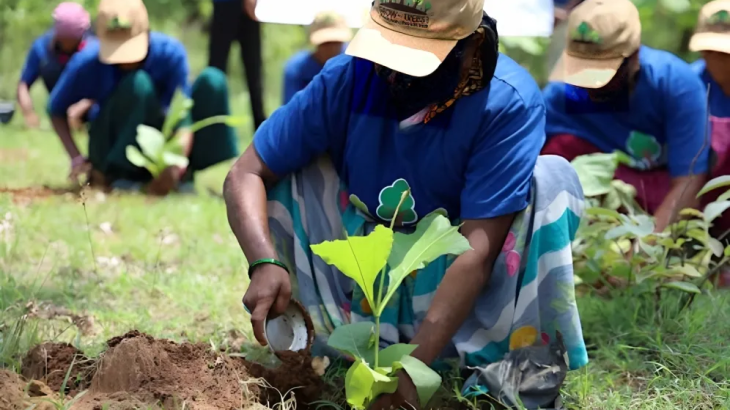The Sustainable Development Goals (SDGs) offer a thorough framework for solving the social, economic, and environmental issues that are currently posing the greatest threats to the planet. Regardless of a country’s level of development, the SDGs apply to all of them. They understand that accomplishing the goals of sustainable development is everyone’s responsibility and that each country has a part to play in doing so. This global commitment encourages international collaboration, cooperation, and solidarity. The SDGs acknowledge that protecting the environment is a top priority. They deal with issues including pollution, climate change, biodiversity loss, and unsustainable patterns of consumption and production.
By fostering environmental, social, and economic well-being, tree planting is a comprehensive strategy that is essential to achieving the Sustainable Development Goals (SDGs). Whether it’s generating employment opportunities for communities or being an efficient solution to the many environmental challenges we face today, planting of trees serves multiple purposes for the environment, mankind, and the planet.
Here’s how tree planting can help us inch closer to achieving some of the sustainable development goals (SDGs):
SDG 1: No Poverty

Initiatives to plant trees can help local communities by creating income and job possibilities. For instance, agroforestry programs, sustainable forestry initiatives, and forest-based resources can help people make a living, which helps to fight poverty and enhance socioeconomic situations. This is why we think it’s important to collaborate with local and tribal communities at our planting sites in order to create jobs and support communities’ efforts to augment their income. Since our inception in 2010, we have planted more than 18 million trees and created over 1.4 million workdays for rural communities in different parts of India.
In fact, planting trees is a great way to educate people on how to use forest resources judiciously and sustainably. Communities feel more empowered and in control of their lives when they participate in tree planting activities.
SDG 13: Climate Action

A mature tree can absorb approximately 20 kg of carbon dioxide per year. As carbon sinks, trees mitigate climate change by absorbing carbon dioxide from the atmosphere. They aid in lowering greenhouse gas emissions, reducing deforestation, and protecting biodiversity—all things necessary for taking action on climate change. By introducing a range of tree species, we can fortify ecosystems and increase their resistance to the effects of climate change, such as harsh weather, unprecedented natural disasters, etc.
SDG 15: Life on Land

Trees are an essential component of terrestrial ecosystems and help to preserve biodiversity. They preserve ecological equilibrium, offer habitat for numerous species, and prevent soil erosion. Desertification can be stopped and degraded land can be restored by tree planting. In order to ensure the responsible and sustainable use of forest resources, tree planting can be an element of sustainable forest management practices. It includes selective logging, reforestation, and afforestation, all of which encourage the regeneration and long-term productivity of forests. Ecosystem services, biodiversity, and local community livelihoods are all supported by sustainable forest management.
Our projects across 23 states of India are planned with an eye on achieving the aforementioned SDGs. We wanted to make tree planting easier, more accessible and convenient for everyone. Greet with Trees® was established to help people plant trees through different projects like Trees for Tigers™, Trees for Farmers, etc. from the convenience of their homes and contribute to the global challenges we all face today.
